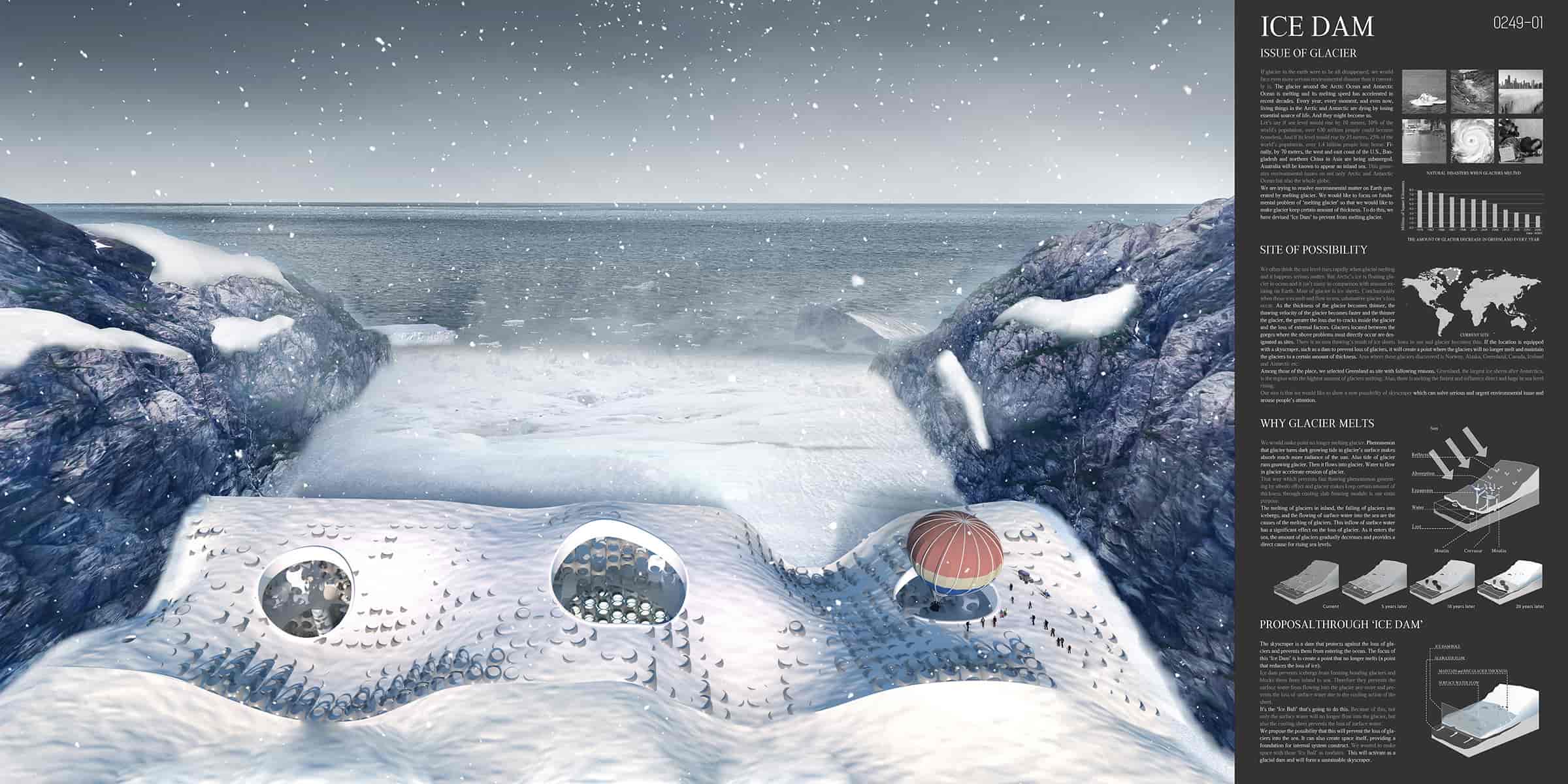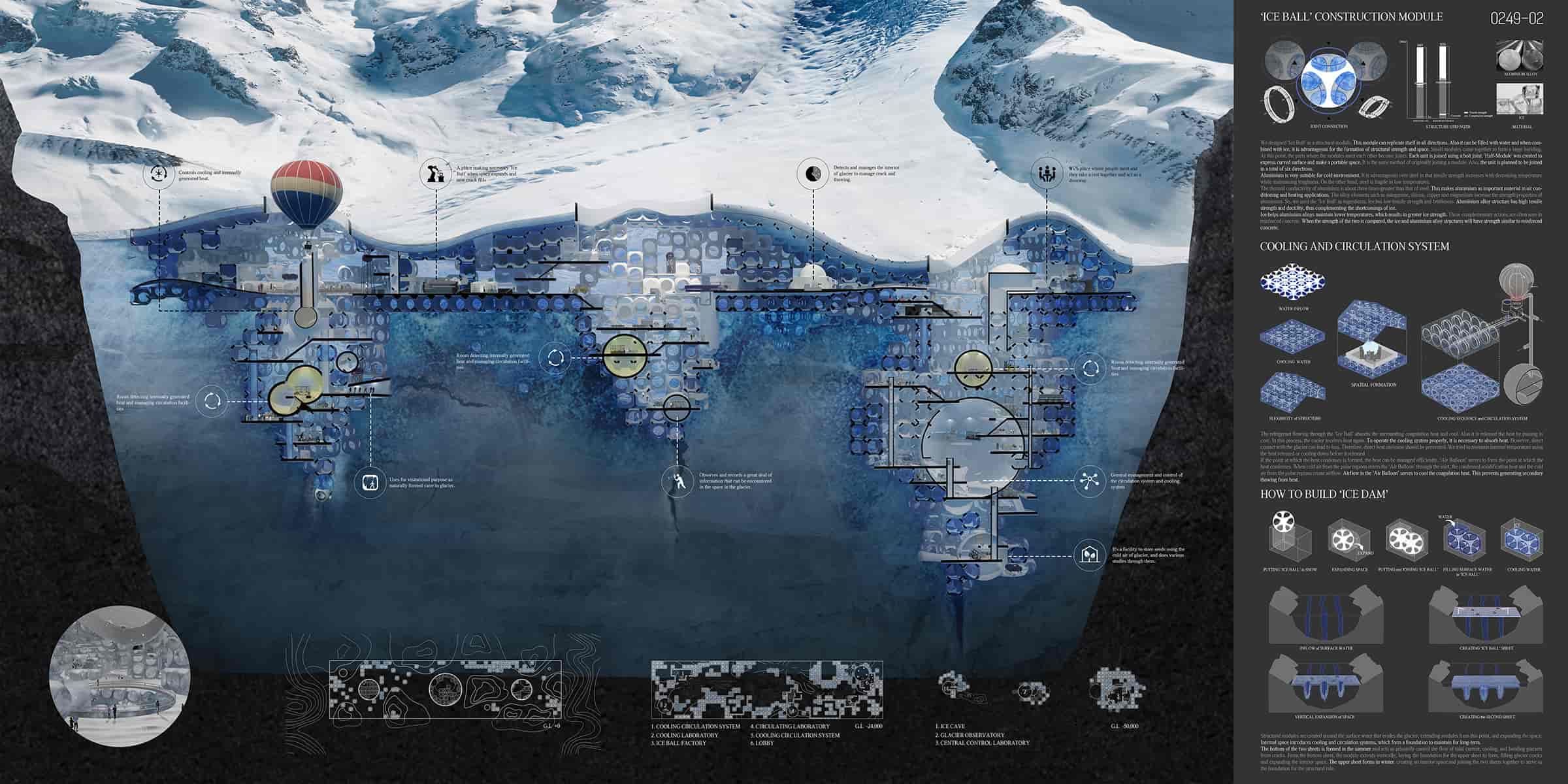Honorable Mention
2019 Skyscraper Competition
Jae Min Jo, Geonuk Yun, Kyungjun Park, Hobin Bae, Jiyeon Kim, Weonkyung Cho, Ganghui Lee
South Korea

The project began with the belief that skyscrapers, a collection of architectural and high-tech technologies, could be an alternative to solve the Earth’s environmental problems. In this sense, we have been trying to take an architectural challenge to preserve glaciers that are melting as a result of global warming.
Site
Our project destination was focused on Greenland’s continental ice sheet to propose a structure that prevents the melting of glaciers. Especially, it is intended to prevent the melting of glaciers formed between canyons. Glacier is exposed to the air at the area where it connects to the sea, resulting in faster melting. Furthermore, the melting rate is further accelerated by Crevasse and Moulin which are formed by flowing down water. We would like to prevent the loss of glaciers through proposing a structure that would freeze the ice tightly again in areas where it melts.
Idea
In this project, we would like to propose a structure that can make the ice density of melting glaciers hard again. The construction process also had to be coordinated with the structural characteristics of the glacier.
The Ice-dam we are proposing here is a skyscraper that functions to prevent the melting of glaciers. In particular, this project is proposed with the idea of the structural module called Ice-ball, which is a tectonic element that strengthens the freezing of glaciers and forming the construction structure and space.
Structure and Material
Ice-ball is a self-replicating structural element that forms space. This is a system that is interconnected by the opening of the six sides of sphere. It is a method of structure that can be expanded horizontally and vertically in this way. When it is inserted inside of glacier, it could expand by excavating inside the ice to create space and installing Ice balls. Inside the extended ice ball structure, water that melted from glaciers could be stored and frozen to make ice. Ice ball structural plates could make form of strong composite structure by taking the form of trusses in their own right and letting the ice inside take on the compressive force. Furthermore, the materials of ice ball trusses were used to increase their structural performance by using aluminum alloys that become stronger at low temperatures.
Freezing System
The freezing system of water inside the ice ball is carried out by the circulation of the refrigerant. In the process of water freezing by refrigerant, vaporization heat was absorbed, and it was released outside or used for internal heating. In particular, heat released to the outside was allowed to travel a long distance through the hot air balloon to prevent the outside air from becoming hot.
Spatial Construction
The construction of an Ice-Dam begins with the formation of a horizontal structural plate. This system is not supported on underground ground, but rather on horizontal artificial ground and creates hanging spaces. Structural components are formed by Ice balls and structural rigidity is ensured through stages of freezing process of water inside. This process forms the dam to reduce the melting speed of glaciers and also creates the interior spaces. The interior space formed by the Ice-ball structure is a reinforced artificial glacial structure, which creates a unique artificial atmosphere in the natural space.
Program
Ice dam itself will play a role in making the surrounding glaciers freeze more tightly. In addition, the interior space formed in it can be used as space for research and observation of glaciers or leased to low-temperature storage facilities such as Seed bank. These programs allow Ice dam to be kept in a sustainable form.


This work is licensed under a Creative Commons License permitting non-commercial sharing with attribution. https://creativecommons.org/licenses/by-nc-nd/4.0/



